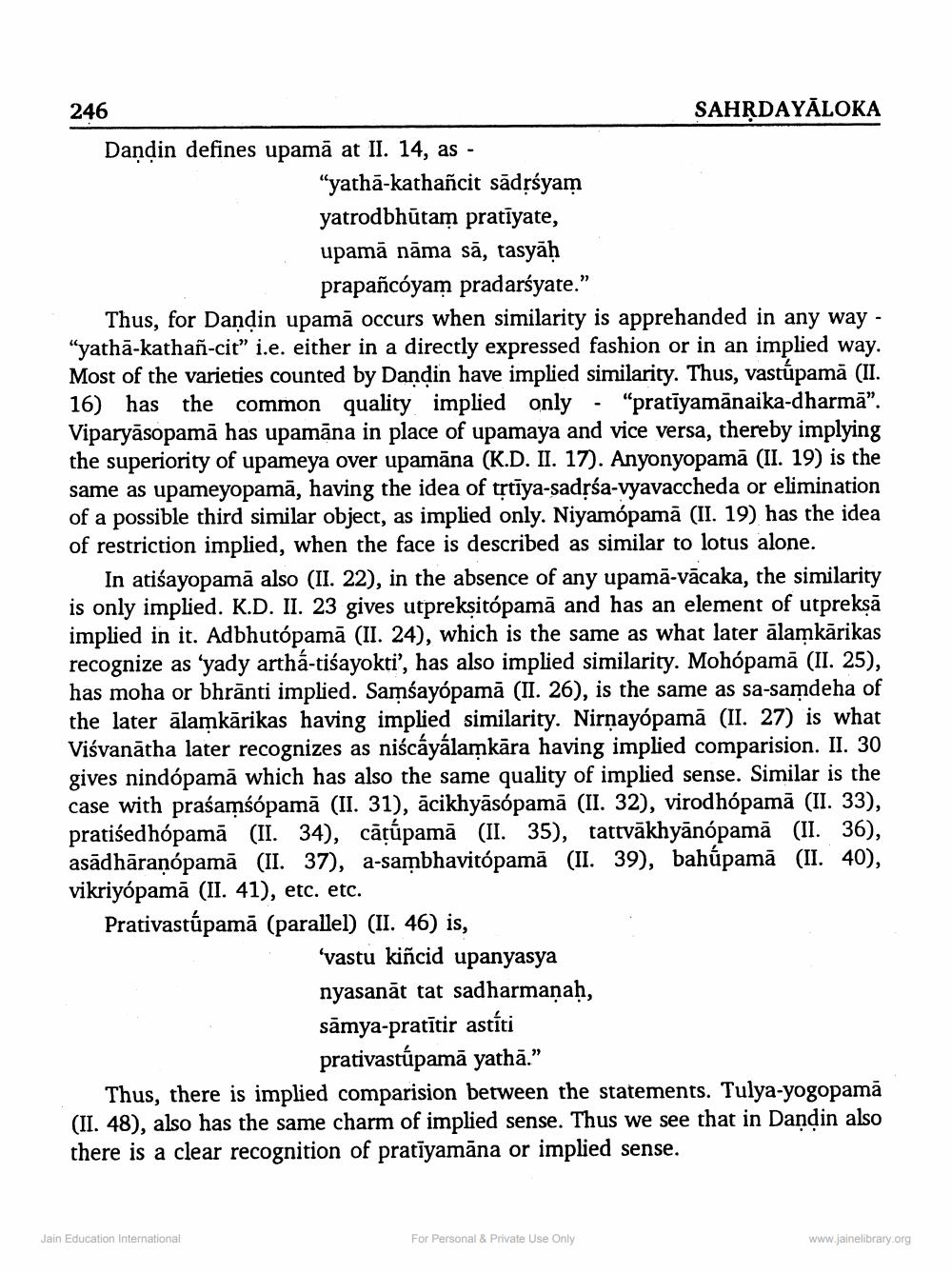________________
246
SAHRDAYĀLOKA
Dandin defines upamā at II. 14, as -
“yatha-kathañcit sāděśyam yatrodbhūtam pratiyate, upamā nāma sā, tasyāḥ
prapancóyam pradarśyate.” Thus, for Dandin upamā occurs when similarity is apprehanded in any way - "yathā-kathan-cit" i.e. either in a directly expressed fashion or in an implied way. Most of the varieties counted by Dandin have implied similarity. Thus, vastúpamā (II. 16) has the common quality implied only · "pratīyamānaika-dharmā”. Viparyāsopamā has upamāna in place of upamaya and vice versa, thereby implying the superiority of upameya over upamāna (K.D. II. 17). Anyonyopamā (II. 19) is the same as upameyopamā, having the idea of třtīya-sadrśa-vyavaccheda or elimination of a possible third similar object, as implied only. Niyamópamā (II. 19) has the idea of restriction implied, when the face is described as similar to lotus alone.
In atiśayopamā also (II. 22), in the absence of any upamā-vācaka, the similarity is only implied. K.D. II. 23 gives utpreksitopamā and has an element of utpreksā implied in it. Adbhutópamā (II. 24), which is the same as what later ālamkārikas recognize as 'yady artha-tiśayokti', has also implied similarity. Mohop has moha or bhrānti implied. Samśayopamā (II. 26), is the same as sa-samdeha of the later alamkārikas having implied similarity. Nirnayopamā (II. 27) is what Viśvanātha later recognizes as niścáyálamkāra having implied comparision. II. 30 gives nindópamā which has also the same quality of implied sense. Similar is the case with praśamśópamā (II. 31), ācikhyāsópamā (II. 32), virodhópamā (II. 33), pratiśedhópamā (II. 34), cātúpamā (II. 35), tattvākhyānópamā (II. 36), asādhāraṇopamā (II. 37), a-sambhavitópamā (II. 39), bahúpamā (II. 40), vikriyopamā (II. 41), etc. etc. Prativastúpamā (parallel) (II. 46) is,
'vastu kiñcid upanyasya nyasanāt tat sadharmaṇaḥ, sāmya-pratītir astíti
prativastúpamā yathā.” Thus, there is implied comparision between the statements. Tulya-yogopamā (II. 48), also has the same charm of implied sense. Thus we see that in Dandin also there is a clear recognition of pratīyamāna or implied sense.
Jain Education International
For Personal & Private Use Only
www.jainelibrary.org




